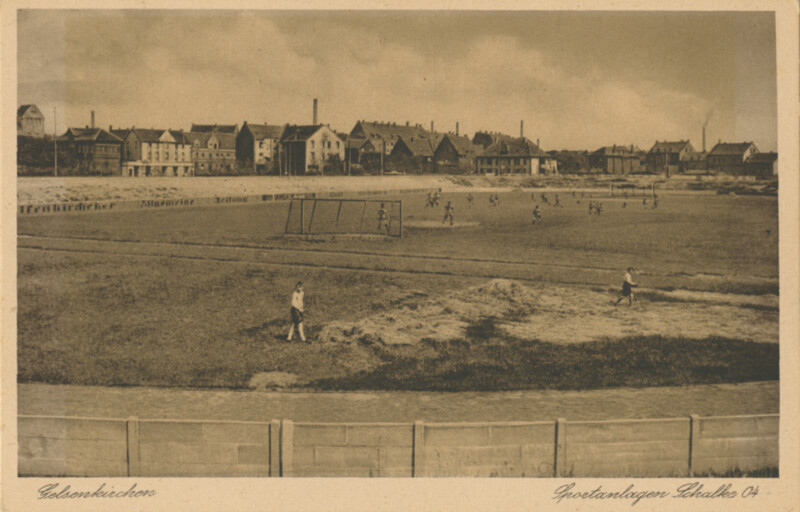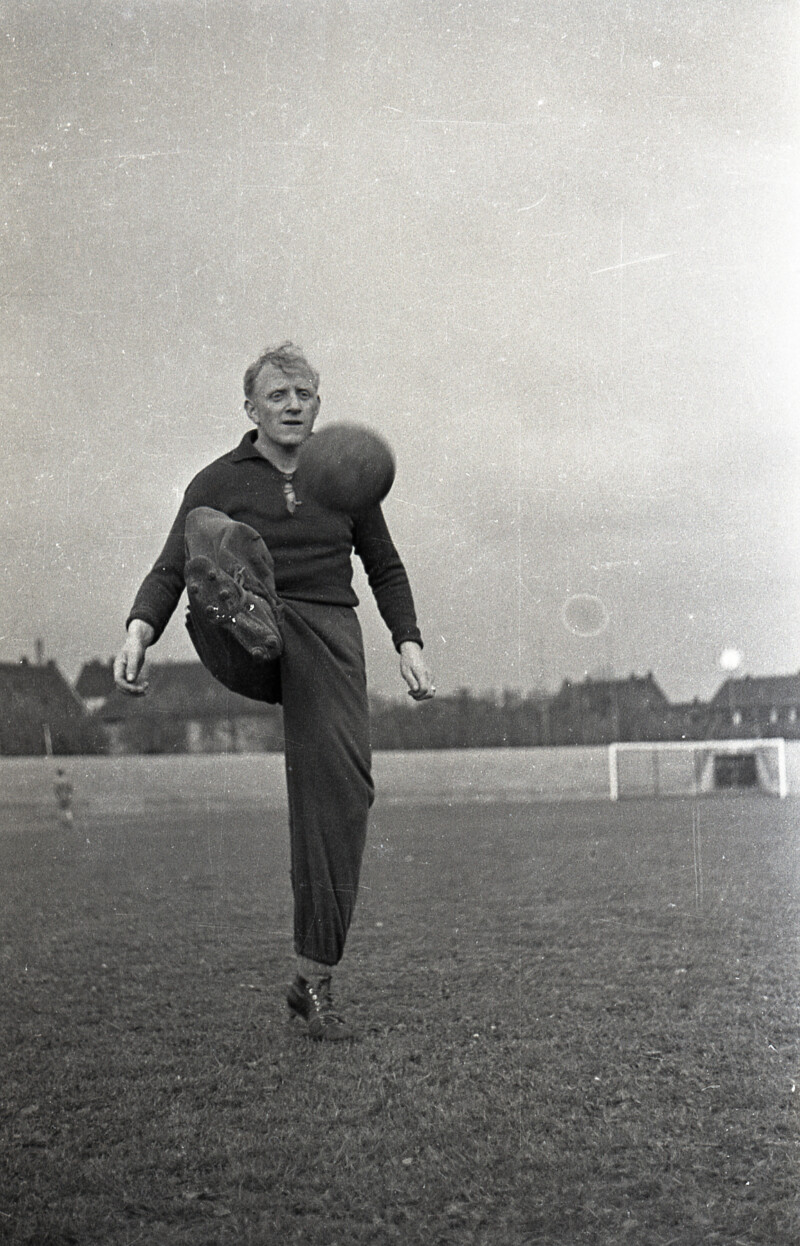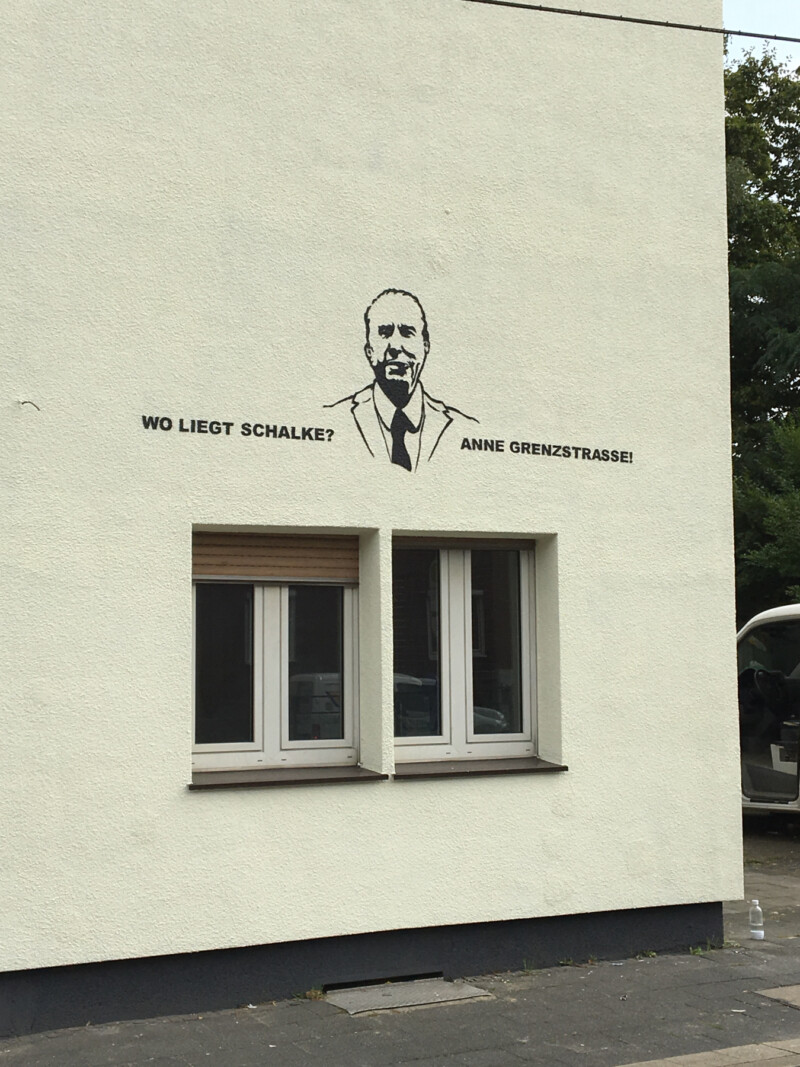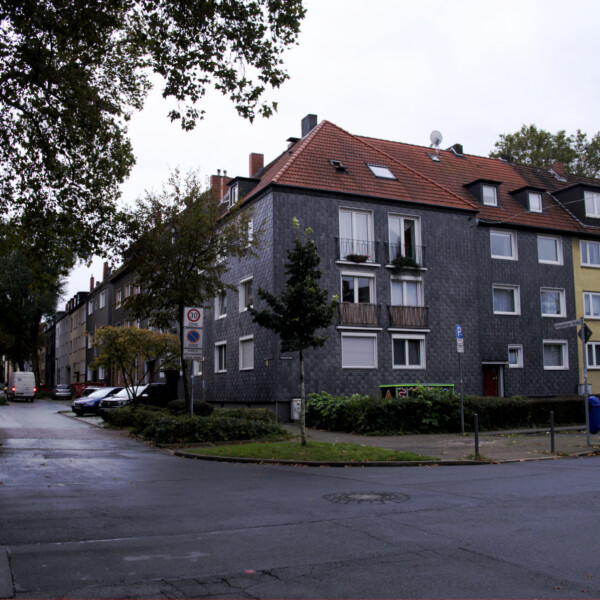Grenzstraße


Where does Schalke begin, where does Schalke end?
In 1927, Ernst Kuzorra puts on a jersey that is not royal blue for the first time: At the age of 22, he was called up to the national team. He made his first international trip in the autumn of 1928. Sweden's King Gustav Adolf welcomed the guests from Germany before the match. During the audience, he approaches Kuzorra. He wants to know where this Gelsenkirchen is located. "Near Schalke," replies Kuzorra. The king then asks where Schalke is again. Kuzorra's famous answer: "Anne Grenzstraße, Your Majesty!" At this point, Schalke has been part of Gelsenkirchen for 25 years. Two years before Kuzorra's birth, Schalke is incorporated into Gelsenkirchen.
When Schalke was incorporated in 1903, the 40,000 people in Schalke suddenly became residents of the city of Gelsenkirchen. Nevertheless, they still know exactly where Schalke ends: To the north, behind the Sutum Bridge and the Emscher. And in the south behind the Grenzstraße, where Gelsenkirchen begins. Beyond that lies another universe. The boys who founded the forerunner of FC Schalke at House Goor had their first sports ground on Grenzstraße. It was organised in 1909 by Fritz Unkel, materials manager at the Consol Colliery. He also ensured that the first Schalke ground was constantly improved. A fence secured the first spectator income. The money was used to build changing rooms. But 10 years later, the 5,000 seats in the stadium were no longer enough. Schalke was too popular. They soon left their ground on Grenzstraße.
The rapid integration of the various industrial villages continues to have an impact to this day. Schalke was also not the last place to be incorporated. In 1928, the town of Buer was added. The residents of today's Gelsenkirchen are still aware of where the "border roads" of their neighbourhoods run. The question of which side of the Rhine-Herne Canal someone was born on alone still carries a certain significance. However, FC Schalke 04 is an important anchor that unites everyone: blue and white flags fly over the allotment garden colonies throughout the city, and Schalke crests hang on the drinking establishments on both sides of the canal. The marriage between the city and the club took place in 1928: To mark the opening of the Glückauf Stadium, the club was renamed FC Gelsenkirchen-Schalke 04 e.V. The "Blaues Band" ("Blue Ribbon") art project by the Stiftung Schalker Markt symbolically illustrates how the colour blue connects people in this city: At night, 160 LED lights bathe almost three kilometres of Kurt-Schumacher-Straße from St Joseph's Church via the Schalke Mile to the Schalke Sports Park in blue light.















